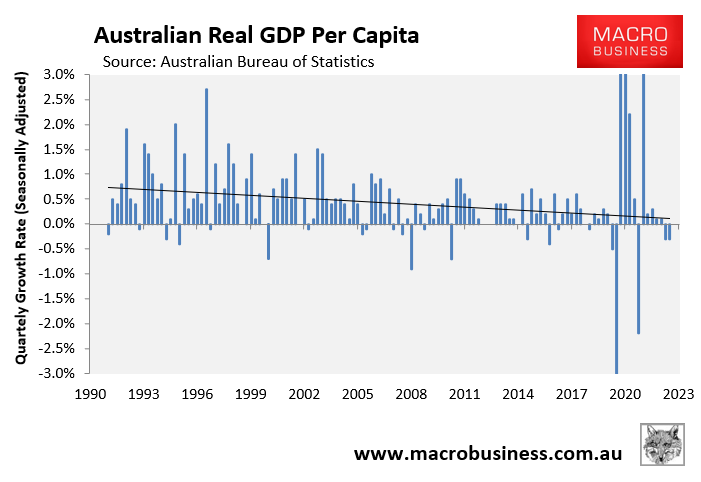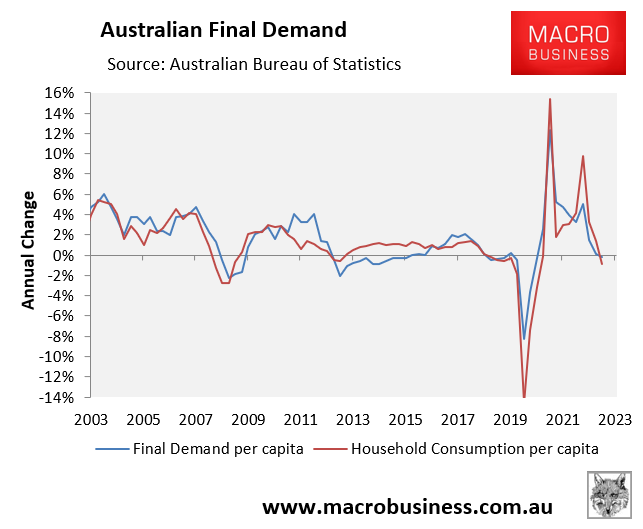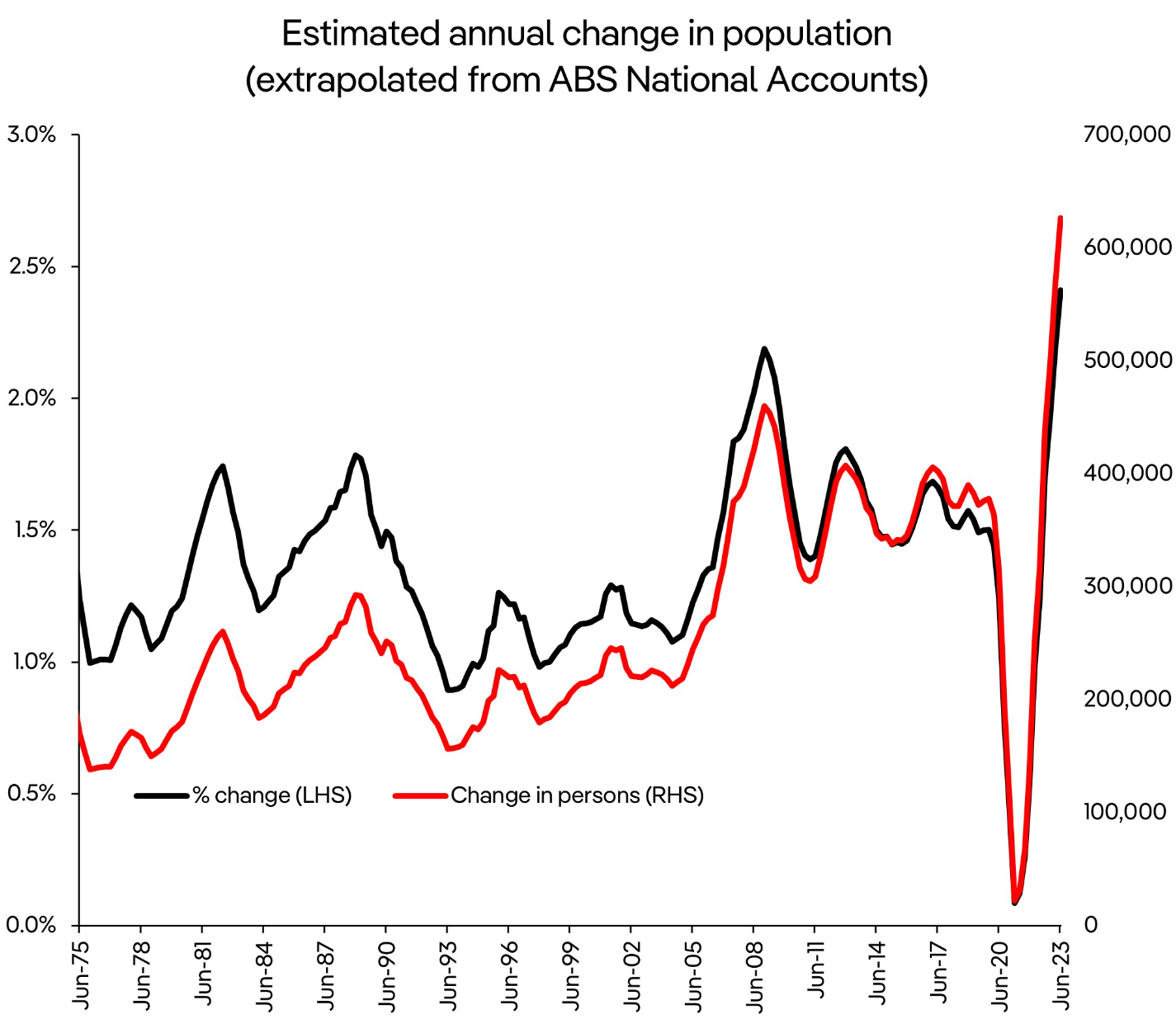Australia plunged into a per capita recession in the June quarter following two consecutive 0.3% quarterly declines in GDP per capita:

The decline in per capita GDP was caused by a 0.2% fall in real per capita household consumption in the year to June:

The OECD still expects Australia to record aggregate GDP growth of 1.8% in 2023, in line with its previous forecast.
However, the OECD has downgraded its forecast for GDP growth in 2024, with the economy now only expected to grow by 1.3% over the calendar year.
Outside of the pandemic, this would represent the weakest two years of aggregate growth since the early 1990s recession.
The May federal budget projected that Australia’s population would grow by 1.9% in 2023 and by 1.6% in 2024:

Source: 2023 federal budget
However, the latest ABS national accounts showed that Australia’s population surged by 2.4% in 2022-23, smashing the federal budget’s forecasts:

Source: Cameron Kusher (PropTrack)
Thus, the OECD’s GDP forecasts suggest that Australia will suffer a two-year per capita recession, with 2024 likely to be even deeper than 2023.

